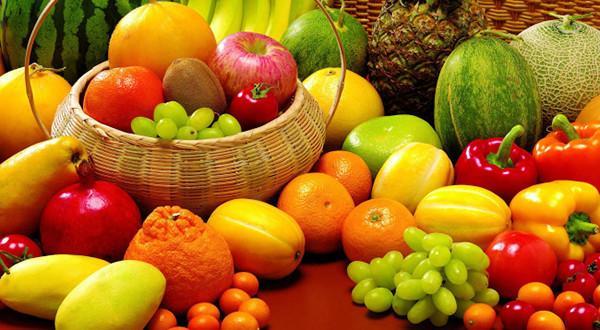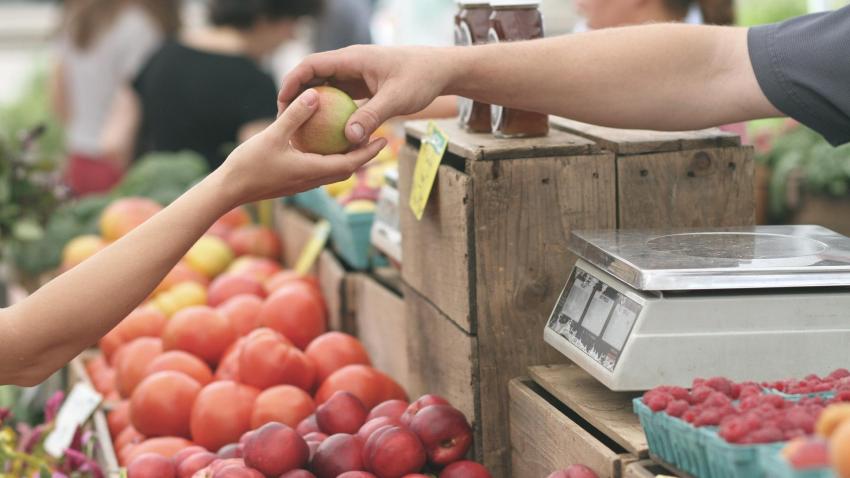You are here
Back to top2016 China’s Fruit & Vegetable Market Review (I)

For China’s fruits and vegetable industry, with its massive market potential, 2016 has been a busy year which saw the arrival of new products and new brands, heavy impacts from changes in tariffs and depreciation of the Renminbi, as well as downfall of significant players. At this juncture, Produce Report brings you a review of the major happenings in the industry over the last 12 months.
Fresh Produce E-commerce: O2O Rapidly Develops on a Pile of Dead Bodies
2016 saw several major fresh produce e-commerce companies went bust but others receiving record breaking capital injections.
In April, the news broke suddenly about Yum77’s going out of business, raising the alarm for the fresh produce e-commerce sector. Once the leading e-tailer for fresh produce in Shanghai and the surrounding areas, with investment from Amazon, Yum77 got into insolvency and eventually had to file for bankruptcy because of differences among the shareholders. However, Yum77’s problem was not unique. Several other significant players had experienced financial crisis which led to layoffs and even closure. Many more smaller players were said to had experienced serious cash flow problems.
Yet, because of the still positive market outlook, fresh produce e-commerce companies were still the darlings in the eyes of venture capitalists and other financiers. Yiguo.com, through Alibaba, received a whopping USD500 million capital injection. Fruitday.com completed a 4th round investment of RMB100 million (USD14.5 million). Missfresh.cn, an up and coming e-tailer with backing from Tencent (the mega media group), also completed a RMB430 million (USD 62.2 million) 2nd round financing while Benlai.com had a two-part, 3rd round financing amounting to USD117 million. Financial backing is a major requirement for success in fresh produce e-commerce. However, a company’s core competencies in terms of ability to generate customer flow/loyalty, low operating cost and efficient logistics are urgent issues to be addressed.
B2C+O2O (Business to Consumers plus Online to Offline) is seen by many as the mainstream business model. Although the more mature fresh produce e-commerce companies, like Fruitday, are still staying away from O2O, offline brick and mortar stores are believed to be the solution for the “last kilometer” challenge of the supply chain. Towards end of 2016, Yonghui Supermarket sold its 21.17% share of Lianhua Supermarket to Yiguo for RMB850 million, making the latter the second largest shareholder of one of the largest supermarket chain in China. Perhaps, for the internet savvy fresh produce e-commerce companies, acquiring existing offline retail chains with strong operational experienced would be more attractive than developing their own offline stores from scratch. Alibaba, Yiguo’s major investor, had previously bought into two fresh produce retail chains to explore integrating offline and online stores into the new retail business model.
On the other hand, traditional retailers have not stayed quiet. Pagoda, China’s largest fruits retail chain had a merger with the online store 1mxian.com towards end 2016. In fact, major local supermarket chains including Yonghui and Wumei had previously attempted to add online stores by themselves but ended up in failure. Carrefeur’s online business has also been rather average. In fact, the ways of thinking and managing traditional retailing operations are very different than those of e-commerce players, making it very difficult for the former to get into online business. Acquisition becomes a more attractive alternative. In June, Walmart announced its cooperation with Jd.com, although it is too early to assess how successful this may turn out to be.
In 2017, the fresh produce e-commerce industry is expected to have further re-structuring while investors are becoming more rational. In the next two to three years, new business model may emerge and perhaps fresh produce e-commerce would be able to realize its profit potential.
At “China’s Pace” – Using Chartered Flights and Boats
It is almost superfluous to say that cost effective logistics is critical to marketing fresh produce. The cold chain industry made steady progress in 2016, both for the “last kilometer” cold chain management and intercontinental shipments. It is estimated that cold chain logistics is now a RMB220 billion (USD28.9 billion ) industry, with a growth of 22.3% versus year ago.
In the past year, delivery of fresh fruits and vegetables has sped up significantly. Intercontinental transportation was influenced by the high volumes of South African produce, particularly cherries, shipping to China. Chartered cargo flights have been increasingly utilized by Chinese importers, significantly reducing shipment lead time. For air-freighting Peru produce as an example, it used to take 3-4 days to arrive in China. Direct flight from Lima to Shanghai, with a technical stopover in the US for changing crew and refueling, only takes 25 hours. Sea freight’s lead time was also shortened by about 10 days in 2016. Sea freight’s long lead time is due to the need for the vessels to pick up other cargos at different ports on route to China. Chilean Cherry Committee recently signed an agreement with the country’s shipping line conference, ASPA 1, to secure expedited shipping services.
Another development in 2016 was related to policies at the ports of entry. Hong Kong, Guangzhou, and Shanghai have long been and still are the major ports for fresh produce. However, the Zhengzhou (Henan Province) port, which was opened in 2014 and quickly became an important distribution center for fresh produce, registered very significant growth in 2016. More than 70 chartered flights arrived in the last two months, raising the total import volume of South American fruits to 7,000 tons. Last year also saw the opening of the Hefei (Anhui Province) and Jinan Airports (Shandong Province) as designated ports of entry for fresh fruits. Chengdu airport was qualified very recently as a designated port for fresh fruits. The whole process of planning, construction and inspection took only 6 months to complete. The current trend not only points to the opening of more airports for handling importation of fresh fruits but also having ones with more differentiated services.
In line with the rapid growth in fresh produce logistics, the Fresh Logistics Asia exhibition has taken a new height in 2016. In 2017, a special fresh produce section will be added by the organizer. (To be continued)
Photo source: Baidu













Add new comment